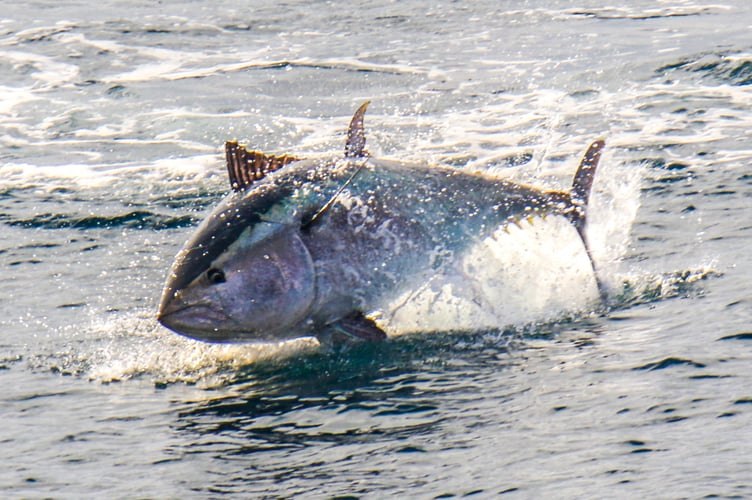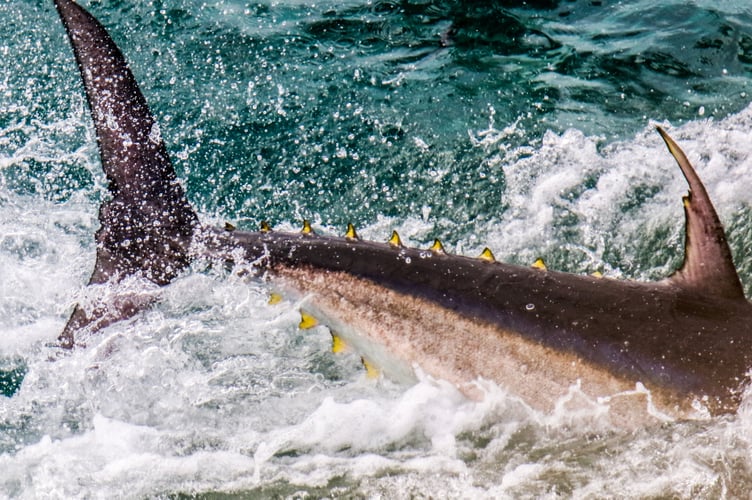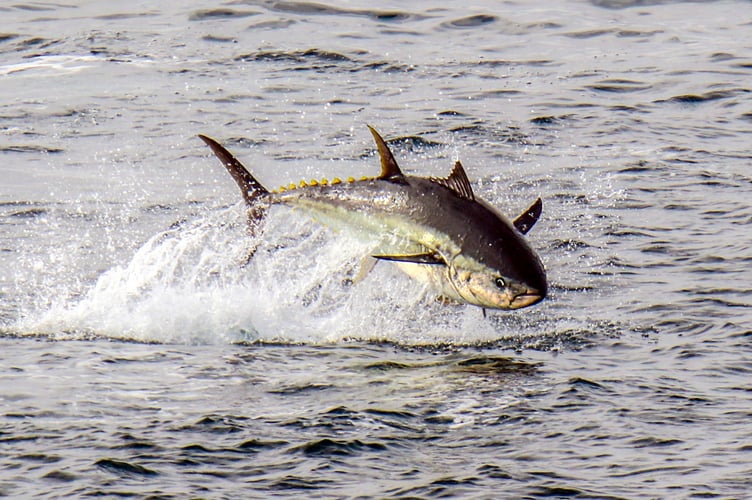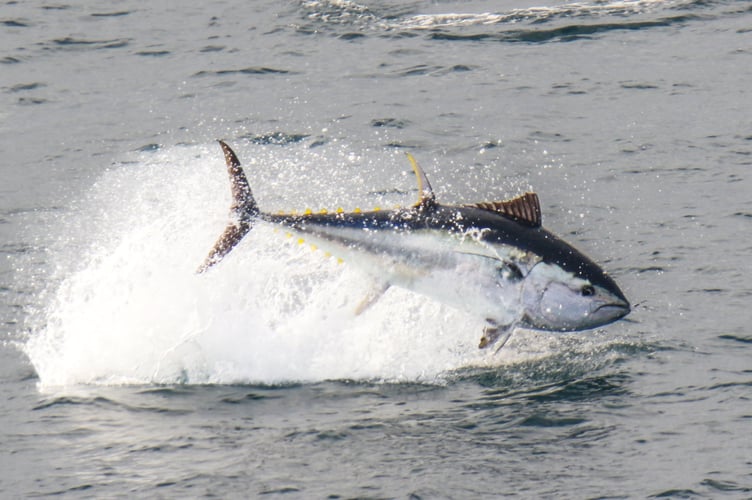PHOTOS captured by a Cornish photographer show a large bluefin tuna display off the Cornwall coast - just as the 'world's most expensive fish' flocks to UK in 'biggest boom' for a century, writes SWNS reporter Lauren Beavis.
Martin Yelland, 42, captured the incredible shots on October 11 whilst out walking on the clifftops near St. Ives with his family. The family were lucky enough to spot an incredible display of bluefin tuna in the sea - that Martin said went on for hours.
Martin, who is head of shipping at Lay's Auctioneers in Penzance, said: "My family and I were walking the clifftops enjoying the views and looking for wildlife to watch and try document.
"We love being out in nature, and have had many adventures together. The boys have their own cameras, and have photographed puffins on Skomer Island twice now, and we go out as a family most week ends exploring the awesome Cornish coastline."

The avid wildlife and surf photographer said the family had seen tuna in the sea off St. Ives last winter - but they were unable to take photographs.
Martin, who runs his own book company with his wife, Zoe, explained: "That afternoon however, the tuna put on a fine display for the two hours we were there, and were still super active when we left later that day.
"They are awesome to watch, and incredibly frustrating to photograph, as they explode out of the water breaching, chasing their gar fish prey.
"The whole sea was boiling with activity, there were seagulls, shags and cormorants all competing for the fish prize that the tuna were bringing up to the surface. It was like an explosion in the sea.

"At one point I even saw, and captured a photo of, a grey seal fully breaching to grab a fish - behaviour I had never seen before.
"The tuna were difficult to photograph, but I did get lucky on a few occasions and managed to capture my best tuna images to date. We left the coast extremely happy, having witnessed another fine natural spectacle right on our doorstep."
Bluefin are the largest tunas and can live up to 40 years. They migrate across all oceans and can dive deeper than 3,000 feet.
Overfishing and high demand for the bluefin tuna for many years have severely depleted stocks, leading to strict regulations and quotas that limit supply.

Only a small number of licensed commercial vessels are permitted to fish for bluefin, and they must adhere to stringent rules on when and how many fish they can catch.
These regulations have led to the recovery of bluefin tuna populations in some areas, such as UK waters, but close monitoring of commercial voyages is still considered vital.
Bluefin tuna numbers are rising across the UK after being virtually absent in the 1990s, thanks to a recovery plan set up by the International Commission for the Conservation of Atlantic Tunas (ICCAT).
According to the Marine Conservation Society, it is not yet clear whether populations have reached sustainable levels to withstand commercial fishing.

.png?width=209&height=140&crop=209:145,smart&quality=75)
.jpeg?width=209&height=140&crop=209:145,smart&quality=75)


Comments
This article has no comments yet. Be the first to leave a comment.